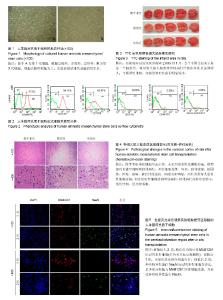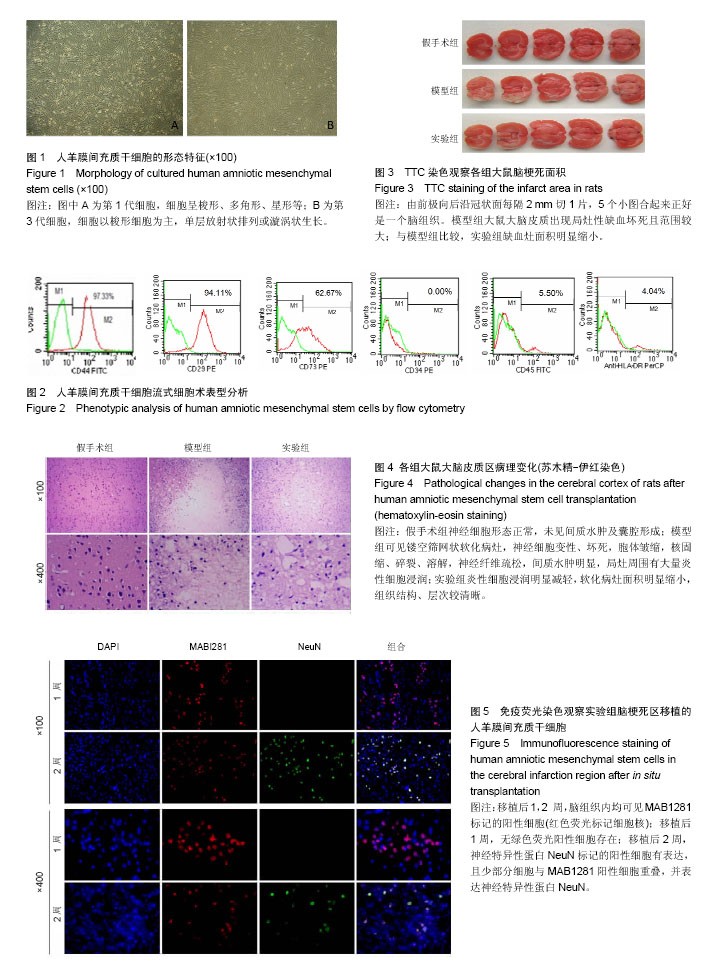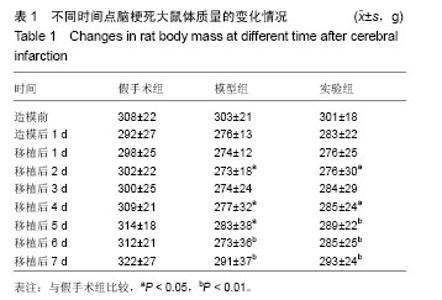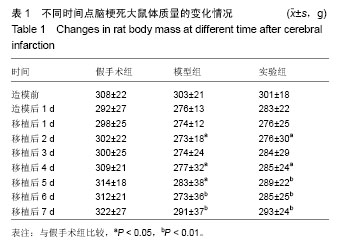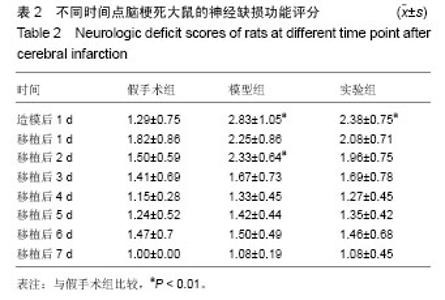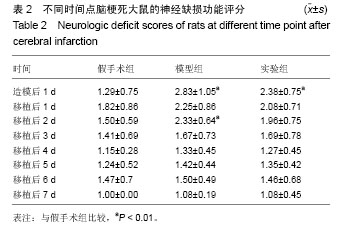| [1] 任雪梅,杨光福.脑梗死治疗研究现状与进展[J].河北医学,2010,16(2):237-239. [2] Maruyama H,Tanahashi N.Diagnosis and treatment of cerebral infarction.Nihon Rinsho. 2010;68(5):920-925.[3] Palestrant D,Frontera JA,Mayer SA.Treatment of massive cerebral infarction. Curr Neurol Neurosci Rep.2005;5: 494-502.[4] Kamadjaja DB,Purwat I,Rantam FA,et al.The Osteogenic Capacity of Human Amniotic Membrane Mesenchymal Stem Cell (hAMSC) and Potential for Application in Maxillofacial Bone Reconstruction in Vitro Study.J Biomed Sci Eng.2014; 7(8):497-503.[5] Chang YJ,Hwang SM,Tseng CP,et al.Isolation of mesenchymal stem cells with neurogenic potential from the mesoderm of the amniotic membrane.Cells Tissues Organs. 2010;192(2):93-105.[6] Insausti CL,Blanquer M,Bleda P,et al.The amniotic membrane as a source of stem cells.Histol Histopathol.2010;25(1):91-98.[7] Portmann-Lanz CB,Schoeberlein A,Huber A,et al.Placental mesenchymal stem cells as potential autologous graft for pre- and perinatal neuroregeneration.Am J Obstet Gynecol.2006; 194(3):664-673.[8] Deng J,Petersen EB,Steindler DA,et al. Mesenchymal stem cells spontaneously express neural proteins in culture and are neurogenic after transplantation.Stem Cells. 2006;24:1054- 1064. [9] Sakuragawa N,Kakinuma K,Kikuchi A,et al.Human amnion mesenchyme cells express phenotypes of neuroglial progenitor cells.J Neumsci Res.2004;78(2):208-214.[10] Sun H,Hou Z,Yang H,et al. Multiple systemic transplantations of human amniotic mesenchymal stem cells exert therapeutic effects in an ALS mouse model.Cell Tissue Res.2014;357(3): 571-582.[11] 王钰莹,方宁,陈代雄,等.人羊膜上皮细胞静脉移植治疗大鼠心肌梗死[J].中国组织工程研究,2012,16(36):6717-6723.[12] 李昌植.栓线法制备MCAO模型大鼠研究进展[J].中国医学研究与临床,2007,5(11): 59-63.[13] Cao DJ,Wang ZV,Battiprolu PK,et al.Histone deacetylase (HDAC) inhibitors attenuate cardiac hypertrophy by suppressing autophagy.Proc Natl Acad Sci USA.2011; 108(10):4123- 4128.[14] Manochantr S,Tantrawatpan C,Kheolamai P,et al.Isolation, characterization and neural differentiation potential of amnion derived mesenchymal stem cells.J Med Assoc Thai.2010; 93(7): 183-191.[15] Deng J,Petersen EB,Steindler DA,et al.Mesenchymal stem cells spontaneously express neural proteins in culture and are neurogenic after transplantation.Stem Cells.2006;24: 1054-1064.[16] 王静,赵绍云,李明哲,等.Let-7c慢病毒载体对骨髓间充质干细胞体外诱导分化为神经细胞的影响[J].中国组织工程研究,2016, 20(1):20-25.[17] Bao C,Wang Y,Min H,et al.Combination of Ginsenoside Rg1 and Bone Marrow Mesenchymal Stem Cell Transplantation in the Treatment of Cerebral Ischemia Reperfusion Injury in Rats.Cell Physiol Biochem.2015,37: 901-910.[18] Hosseini SM,Farahmandnia M, Razi Z,et al.12 hours after cerebral ischemia is the optimal time for bone marrow mesenchymal stem cell transplantation. Neural Regen Res. 2015;10(6): 904-908.[19] Li F,Miao ZN,Xu YY,et al.Transplantation of human amniotic mesenchymal stem cells in the treatment of focal cerebral ischemia.Mol Med Rep.2012;6(3):625-630.[20] Palmatir M,Plunkett R,Kopin I.Soluble neurite-promoting activity in fetal or term amnion.Soc Neurosci Abstr.1989; 15:1356.[21] Isacsona O,Costantinia L,Schumacher JM,et al.Cell implantation the rapies for Parkinson’s disease using neural stem, transgenic or xeogeneic donor cells. Parkinsonism Rel Dis.2001;7:205-212.[22] Wang TG,Xu J,Zhu AH,et al.Human amniotic epithelial cells combined with silk fbroin sca?old in the repair of spinal cord injury. Neural Regen Res. 2016;11(10): 1670-1677.[23] Jori FP,Napolitano MA,Melone MA,et al.Molecular pathways involved in neural in vitro differentiation of marrow stromal stem cells.J Cellular Biochem.2005;94:645-655.[24] McCully JD, Wakiyama H, Hsieh YJ, et al. Differential contribution of necrosis and apoptosis in myocardial ischemia-reperfusion injury. Am J Physiol Heart Circ Physiol. 2004;286:1923-1935. |
